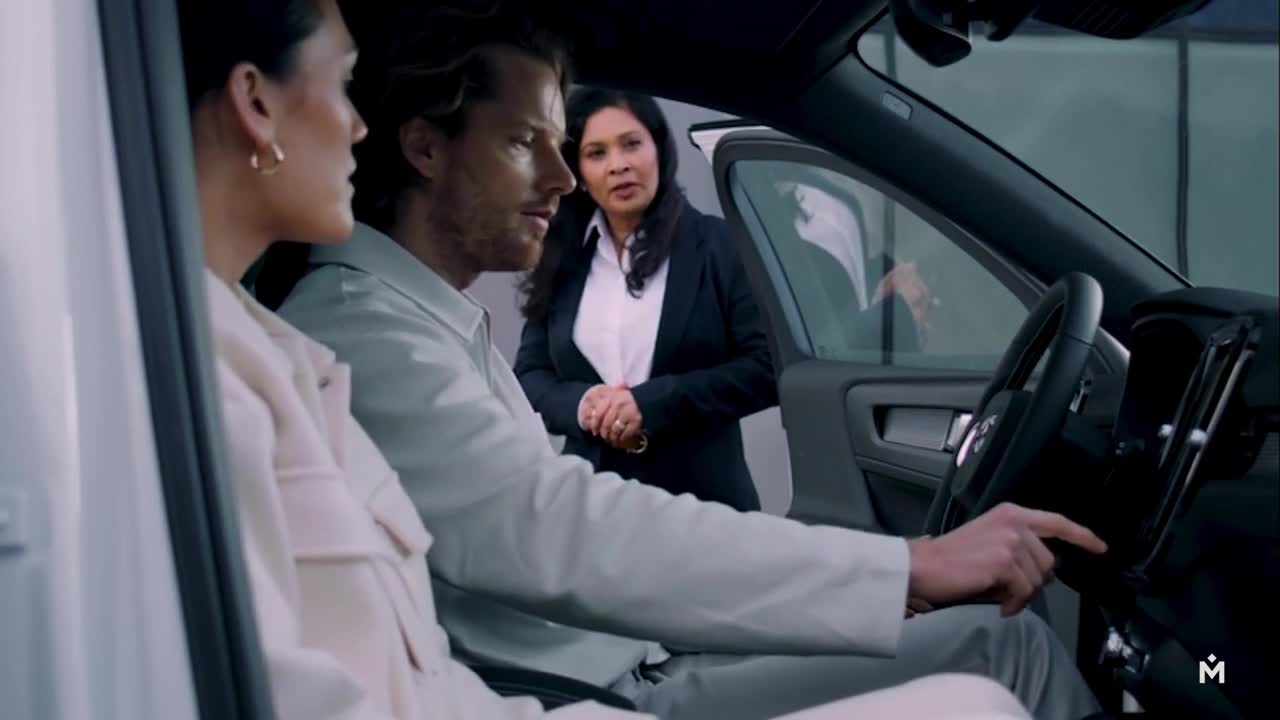Dana Macek, a former CX and EX leader at Ford Motor Company, shares what she believes original equipment manufacturers (OEMs) should do to improve customer experience in the automotive industry as new technology and economic uncertainty affect all brands.
The automotive industry has dealt with many changes and new challenges over the past few years. All of this disruption has created an opportunity for automakers to find new and innovative ways to utilize experience management.
Dana Macek, Solutions Principal at Medallia, explains the biggest challenges facing the industry today and how she envisions leaders in the automotive industry incorporating both customer experience (CX) and employee experience (EX) to navigate to success.
Can you briefly describe your career in the automotive industry?
I bring to Medallia over 23 years of automotive experience. My entire career was spent at Ford Motor Company, until recently when I joined Medallia to pursue my passion for CX and EX.
My experience at Ford was diverse. The early years of my career were spent in the purchasing organization negotiating supplier contracts from new vehicle components to marketing and sales initiatives. Eventually, I wanted something new, so I transitioned to the marketing and sales organization, where I led and managed product education and training programs for dealership frontline employees.
Afterward, I spent time in Ford’s customer service division developing, designing, and prototyping connected vehicle customer experiences. We were leveraging connected vehicle data to create unique, engaging, and personalized service lane experiences.
Finally, I moved to Ford’s global customer experience operations. There I managed a global dealership employee experience assessment strategy. We partnered with Medallia to refresh the design of the survey, measurement, and reporting of employee engagement at the dealership level, analyzing its impact on key business outcomes like customer satisfaction and sales. After the successful launch of the EX program, I launched a global, holistic, enterprise CX strategy, measurement, and reporting program.
I saw that project from discovery to design to implementation and partnered with Medallia to once again advance the maturity of Ford’s CX practice.
What are the biggest challenges in the automotive industry today?
Seeing these challenges through the lens of the customer, they can be categorized into three segments of the customer journey: shop, buy, and own.
Automakers, now more than ever, need to prioritize understanding the customer journey of shopping, buying, and owning a vehicle so that they can craft differentiated experiences in the automotive industry that are consistent and true to their brand promise.
Shop
As they say, necessity is the mother of invention, and the pandemic was just that for the automotive industry. It forced automakers to lean, more than ever, into remote and digital experiences because people were not able to visit dealerships in person.
While there is still a strong preference among consumers to visit a dealership to look at, experience, and test drive a vehicle before purchasing, there is a growing trend toward a digital retail experience, especially during the discovery phase of shopping. Automakers and their dealerships have an opportunity to create seamless shopping experiences consistent across all their channels, from their digital websites and apps to their brick-and-mortar dealerships.
Buy
We’re seeing the direct-to-consumer business model take off. For decades, automakers sold vehicles through a dealership mainly due to franchise laws. Tesla rolled out a direct-to-consumer business model years ago by selling vehicles through its website and company-owned retail locations. Today, more and more consumers prefer fixed pricing and an easy, effortless buying process. A similar consideration is the agency model in which the OEM is the retailer and the dealership is the point of delivery and service.
In this model, the dealership does not hold any inventory nor have control over price or incentives. Both of these models are disrupting the buying experience the industry has been using for the past 100 years, as well as the relationship between the OEM and the dealerships.
It’s no secret that Covid, as well as the chip shortage, have caused major supply chain issues that severely impact new-vehicle inventory. Pre-Covid, automakers and dealers had on average over 100 days supply of new-vehicle inventory, but that dropped dramatically to as low as 29 days in 2021. The outlook, and hope, is that the inventory will normalize in 2023 to levels that are optimal for the OEM, the dealer, and the consumer.
In the meantime, the low inventory has drastically impacted the buying experience. When you drive by dealerships today, their lots are sparse. Dealerships are selling every vehicle they get, leaving very little on-hand inventory. Customers are forced to custom order vehicles or buy directly off a dealer’s website before the dealer has taken delivery, and in either case the customers have to wait, often for months. In some cases, customers have to ditch an order and shift brands just to get into a vehicle.
This presents a great opportunity for automakers and dealerships to listen to customers, understand their pain points and take action to improve the experience and build loyalty.
Own
I truly believe technology companies are becoming automakers, and automakers are becoming technology companies. There is a race to get electric vehicles (EVs) on the market. The challenge is knowing what customers want as the EV space evolves. Having a pulse on CX to understand what EV technology is working well and what can be improved during ownership is critical. Microtransactions are another ownership trend that presents an interesting challenge in the industry. Automakers are able to offer certain in-vehicle features that are only available to the customer for a subscription fee. There are pros and cons to this business model, so understanding customer perception is key.
Overall, production cycles are getting shorter and shorter, so collecting feedback early and often is crucial for automakers to continually meet the needs of customers and stay ahead of the tech curve.
With the challenges in mind, what are the biggest opportunities for the automotive industry right now?
The biggest opportunity for automakers during this time of massive transformation is to take a step back to re-evaluate the customer journey and understand every touchpoint to determine which moments matter most.
Automotive OEMs and dealers should focus their CX strategy on collecting signals from moments in one comprehensive platform to deliver meaningful insights to engaged skill teams that are working collaboratively and are empowered to take action continuously to improve customer experience in the automotive industry.
Another great opportunity for automotive is to implement a governance program and team to manage decision-making across skill teams and stakeholders, focus efforts on the 360-degree view of the customer, align on a common vision, and drive accountability across siloed teams.
Lastly, let them know you’re listening. Follow up with your customers to close the loop. It’s a great way to save at-risk customers, create promoters, and learn more about how your customers truly feel.
A holistic approach to customer experience in the automotive industry is the biggest opportunity for brands to operationalize insights to build better experiences that will create more loyal customers.
What are leaders in the automotive industry doing that laggards aren’t doing?
CX is not just a dashboard; it’s more than logging in to a platform to look at metrics.
Automotive leaders are collecting signals, connecting experiences, and evaluating insights for a comprehensive view of how their customers feel about interactions with their brand. They have the commitment, the drive, and the executive buy-in to take action on feedback and are empowered to do something different tomorrow than what they are doing today.
Listening to your customers and making sense of the data is just the beginning. Leaders are prioritizing and operationalizing those insights back into their business to drive customer loyalty.
Additionally, many automakers are siloed and fragmented. The skill teams that manage the dealership experience often do not collaborate with the skill teams responsible for delivering the digital experiences or the customer service centers. This fragmentation causes noise and chaos and is a barrier to creating seamless experiences across a brand.
Leaders in the automotive industry have executive CX advocates saying “let’s get on the same page, CX is a priority and we’re committed to listening and taking action.” Without that level of leadership, it’s a challenge to positively impact change. Closing gaps between siloed teams and disparate systems is a huge opportunity for the laggards to grow their CX maturity and achieve their CX objectives.
What do you think the future of experience management in the automotive industry looks like?
The automotive industry is not new to data and analytics. They’ve been collecting data and analyzing metrics since the beginning. The industry is deeply rooted in developing, designing, engineering, manufacturing, selling, and servicing a very complex product, so they understand data and analytics.
Experience management is the data and analytics behind the human dimension that is integral to the vehicle: the people who engineer and manufacture the vehicle, the people that sell and service the vehicle, and the people that own and experience the vehicle. It is the skills, knowledge, and capabilities to systematically design and deliver those integral human experiences — for both the employees and the customers. Experience management is a dedicated practice to drive intentional, unique experiences to deliver the brand promise.
My goal is to understand our existing automotive clients’ north stars and brand promises, because once Medallia understands that, we can help our clients achieve their goals. It just makes sense — it’s understanding and listening to people.
Just do the right thing, listen to the people, and take action.
OEMs and dealerships looking to improve customer experience in the automotive industry should read our guide, Lessons from Luxury: How Automotive Brands Can Create Exceptional Customer Experiences That Build Loyalty.

EXP Now: Medallia’s On-Demand TV Network








